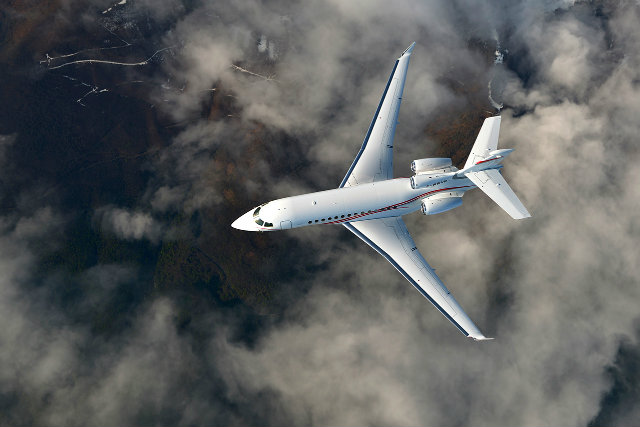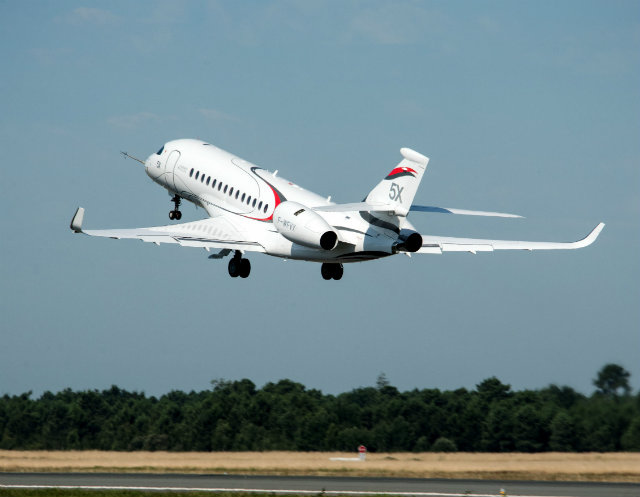Deliveries of Falcon business jets remained flat in 2017, but, at 49 units, output was almost 9% higher than the 45 aircraft Dassault had forecast for period.
It is the first time in four years that the French airframer has not recorded a year-on-year decline in deliveries.
Net orders climbed by 17 aircraft, to 38, for the 12 months ended 31 December, with the intake "fairly evenly split", Dassault says, between its four high-end models – the twin-engined 2000LXS and the 900LX, 7X and 8X trijets.
Dassault also recorded three cancellations for the 5X in 2017, compared with 12 for the ultra-wide type the previous year. The programme was finally axed in December because of recurrent technical issues with the jet's Safran Silvercest engines, which had forced Dassault to delay entry into service from its target date of 2017 to beyond 2020.

Dassault
While the majority of 5X orders have now been cancelled, Dassault says an unspecified clutch of "loyal" customers have chosen to wait until they can transfer their commitments to the new Falcon business jet announced by the manufacturer in December as the eventual replacement for the axed model.
Those hold-outs are counted in the 52-strong Falcon backlog, although the company insists its in-production aircraft make up the bulk of the order mix. At the end of 2016, it had 63 aircraft in its orderbook, falling from 91 the previous December.

Dassault
The formal launch of the new Falcon is planned for 2018, says Dassault. The airframer has already revealed that the yet-to-be-named aircraft is scheduled to enter service in 2022, featuring the same cross-section as the 5X, but with range increased by 300nm (555km) to 5,500nm.
In addition, the new Falcon will also be powered by variants of the Pratt & Whitney Canada PW800 series engines.
"We will be ready as soon as we can with a new Falcon aircraft that will wow our customers, and other potential buyers," says Dassault.
Source: Flight International


























